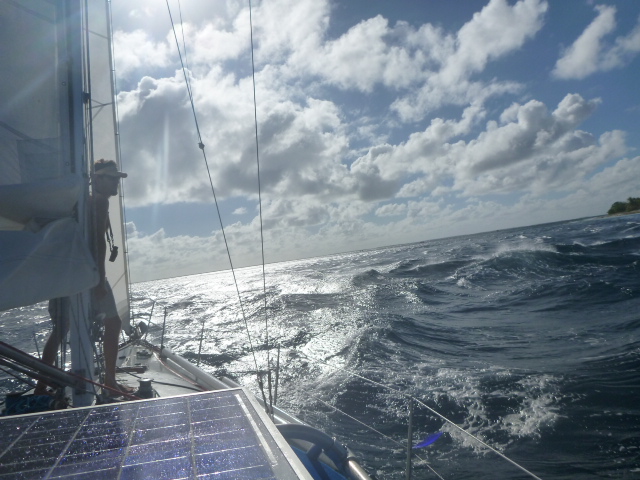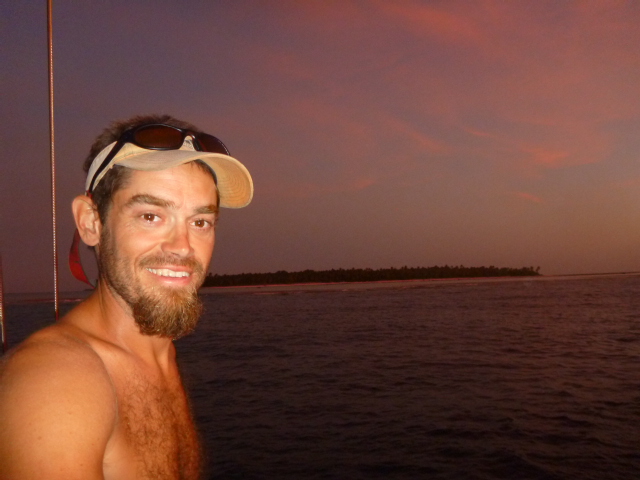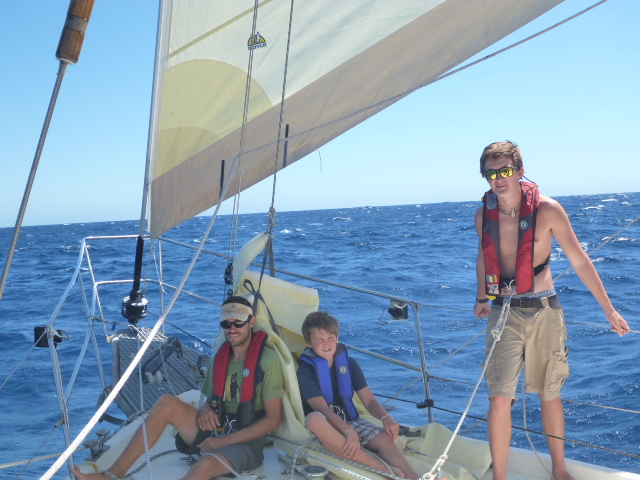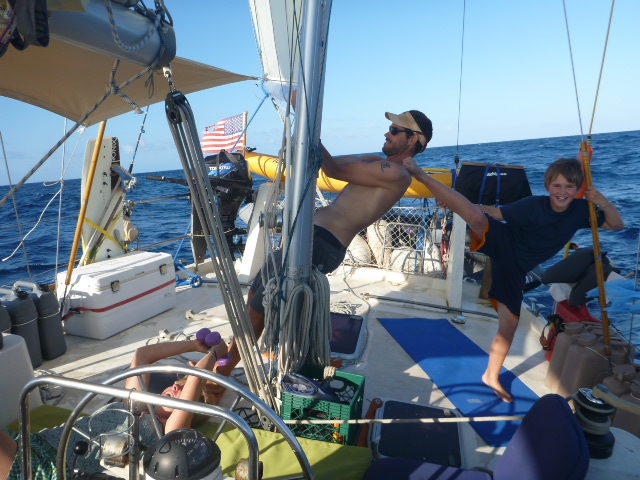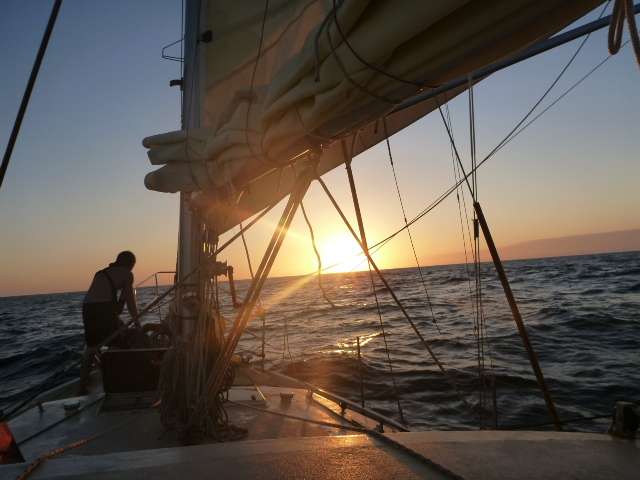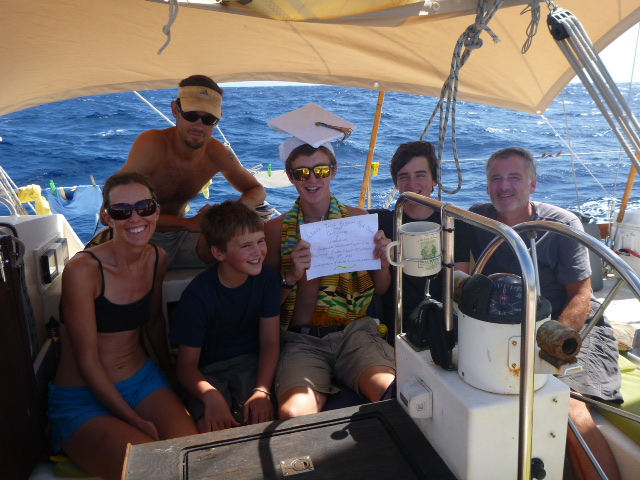Third Watch
So, this is “fair winds and a following sea:” pitch-poling like a drunk college kid as we surf down dark frothy waves. What the hell would it feel like in rough winds and a big beam sea? Terrifying.
I have third watch tonight, the pre-dawn shift from 3am to whenever someone else wakes up in the morning. It usually takes my mind and body several minutes to get used to night sailing when I start my watch. For some reason, it always feels like we’re going a million miles an hour at night. I check the heading, and make sure the sail plan is still the same: wing-to-wing with the wind dead behind us, careening down 10-foot swells as we sail due west. Even though we had the same gig happening all day, something about the moonless dark makes the boat feel faster, and slightly more out of control than during daylight.
I furl in the genoa a bit to see if it eases the motion. “We gotta slow her down!” I think to myself as I winch away at the sheet. Next, I hook up our state-of-the-art navigation systems (my iPhone paired with our Delorme spot tracker) to check our speed. 4.5 knots. Oh. Right. Maybe we weren’t going as fast as I thought. I let the sail back out and settle into a corner of the cockpit to brace against the rocking.
Third watch is my favorite. You know the dark will end. You get to stare at Orion as he ushers in the rising sun. You can watch the water change from black to charcoal to grey to silver to blue. And, best of all, you can drink coffee without worrying about whether you’ll be able to get back to sleep after your shift is over. I love coffee, and brewing a perfect little cup is my reward as the sky starts to lighten at 5:30am. Sadly, my perfect little cup flew across the galley during a big wave, and I ended up with coffee grounds in my hair, eyes, teeth, sleeves. Sigh. I went with instant coffee for round two, admitting defeat in this squirrely sea.
I plot our position and calculate how long it will take before we reach our next destination at an average speed of 5.5 knots. 3 days, 12 hours. I ignore the rattling in the lazarette behind me, the dishes slamming to and fro below, and the occasional flap of the main when it back-winds. Instead, I turn the iPhone to my favorite mix and sing along, write in my journal using the red light on my headlamp, and practice finding southern constellations. I read a bit on the Kindle.
I hand steer the boat for a full hour when the autopilot gives up under the weight of turning the rudder through the swells, pretending I’m Captain Cook steering a tall ship in unknown waters. It is fun to be in control of the boat for a bit, to feel her surf the waves and to use stars as my navigation. But hand steering is not nearly as romantic as one would think, and my shoulders tire quickly.
I’m grateful when the autopilot sputters back to life at sunrise, and the bright light signals the end of my watch. Time for another attempt at the perfect cup of coffee.

